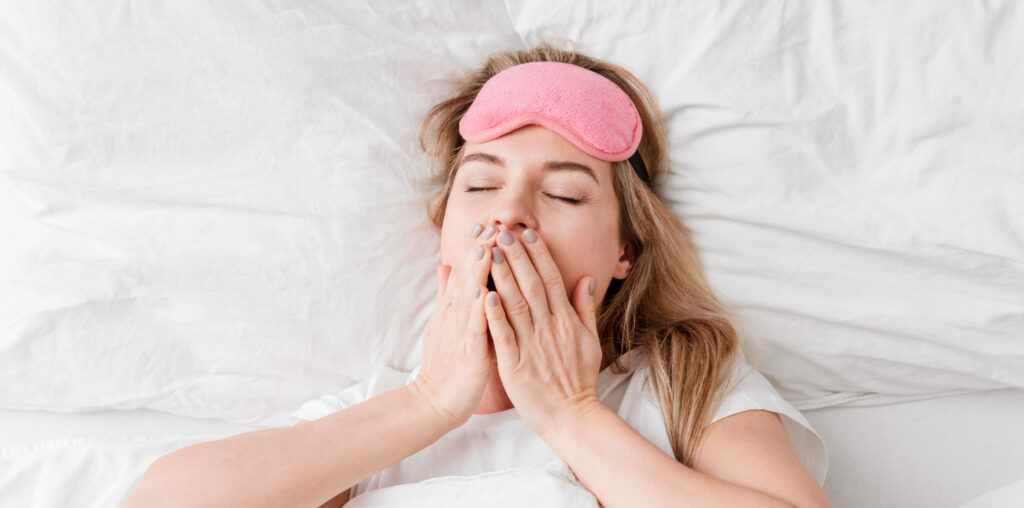Sleep is essential for our overall health and well-being, but for millions of people, restful sleep is interrupted by a condition known as sleep apnea. This common yet serious sleep disorder not only affects the quality of sleep but also poses risks to long-term health if left untreated. Today, we’ll explore what sleep apnea is, its causes, symptoms, and available treatments to help you better understand and address this condition.
Understanding The Basics
It is a sleep disorder which includes repeated interruptions in breathing during sleep. These pauses, known as apneas, can last from a few seconds to minutes and often occur multiple times throughout the night. The condition disrupts the normal sleep cycle, leading to poor quality sleep and daytime fatigue.

There are three main types:
- Obstructive Sleep Apnea (OSA): The most common form, caused by a physical blockage of the airway, often due to relaxed throat muscles.
- Central Sleep Apnea (CSA): Caused by the brain’s failure to send proper signals to the muscles that control breathing.
- Complex Sleep Apnea Syndrome: A combination of both of the other types.
Root Causes
Several factors can contribute to the development of this disorder, including:
- Obesity: Excess weight can lead to fat deposits around the upper airway, obstructing airflow.
- Age: While it can occur at any age, the risk increases as people grow older.
- Genetics: A family history of this disorder increases the likelihood of developing the condition.
- Lifestyle Factors: Smoking, alcohol consumption, and sedative use can relax throat muscles and exacerbate symptoms.
- Medical Conditions: Conditions such as nasal congestion, diabetes, and high blood pressure are linked to a higher risk.
Symptoms To Look Out For
It often goes undiagnosed because many of its symptoms occur during sleep. However, there are several warning signs you can keep a watch for:
- Loud Snoring: Frequent, disruptive snoring is a hallmark of OSA.
- Choking or Gasping During Sleep: This occurs when the airway becomes partially or completely blocked.
- Daytime Fatigue: Feeling excessively tired despite a full night’s sleep is a common symptom.
- Morning Headaches: Caused by disrupted oxygen flow during sleep.
- Irritability and Difficulty Concentrating: Poor sleep quality can lead to cognitive and emotional issues.
If you or a loved one exhibits these symptoms, it’s essential to seek medical evaluation.
Health Risks Associated
When left untreated, sleep apnea can lead to serious health complications, including:
- Heart Disease: Repeated interruptions in breathing can strain the cardiovascular system, increasing the risk of high blood pressure, heart attacks, and strokes.
- Type 2 Diabetes: It is linked to insulin resistance and glucose intolerance.
- Depression and Anxiety: Chronic sleep disruption can negatively impact mental health.
- Daytime Accidents: Fatigue increases the likelihood of workplace errors and motor vehicle accidents.
Diagnosis Information
To diagnose this disorder, a doctor may recommend a sleep study. This could be conducted in a sleep lab or through a home sleep test. These studies monitor breathing patterns, oxygen levels, heart rate, and other metrics to determine the presence and severity.
Treatment Options
Fortunately, it is treatable. The appropriate treatment depends on many factors like the severity, age and lifestyle of the patient.
- Lifestyle Changes:
- Weight Loss: Reducing excess weight can alleviate airway obstruction.
- Sleep Positioning: Sleeping on your side instead of your back can prevent the airway from collapsing.
- Avoiding Alcohol and Smoking: Both can worsen its symptoms.
- Continuous Positive Airway Pressure (CPAP):
CPAP therapy is the best known treatment for OSA. It involves wearing a mask connected to a machine that delivers constant air pressure, keeping the airway open during sleep. - Oral Appliances:
Custom-fitted devices can reposition the jaw and tongue to improve airflow. - Surgery:
In severe cases, surgical procedures like uvulopalatopharyngoplasty (UPPP) or the insertion of implants may be recommended to remove excess tissue or reshape the airway. - Alternative Therapies:
Emerging treatments, such as hypoglossal nerve stimulation, offer promising results for some individuals.
Management at Home
In addition to medical treatments, there are steps you can take to manage this condition:
- Maintain a consistent sleep schedule to improve sleep quality and have a healthy sleep cycle.
- Use a humidifier to reduce airway irritation.
- Practice throat exercises to strengthen muscles and reduce airway collapse.
When to See a Doctor
If you suspect you or someone you know has sleep apnea, don’t delay seeking professional help. Ignoring the symptoms can lead to worsening health and decreased quality of life.
Conclusion
Sleep apnea is more than just a sleep issue, it’s a condition that can impact every aspect of your life. By understanding its causes, recognizing the symptoms, and exploring the available treatment options, you can take the first step toward better health and restful nights. If you experience signs of this disorder, consult a healthcare provider to explore the best solutions for your needs. Take charge today to enjoy a healthier, more energized tomorrow.



